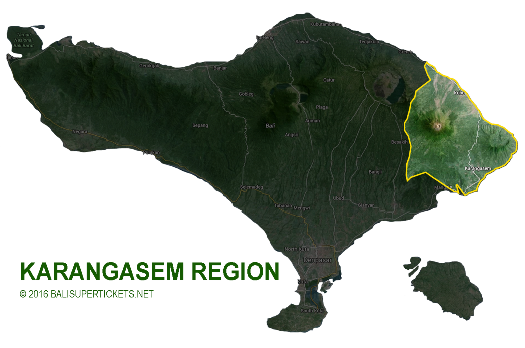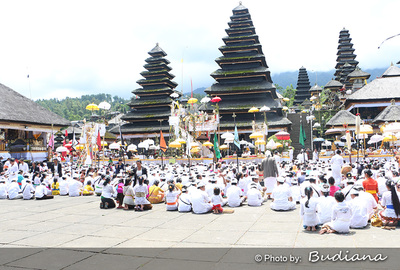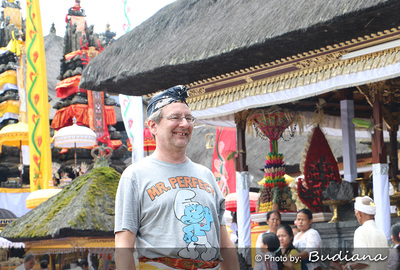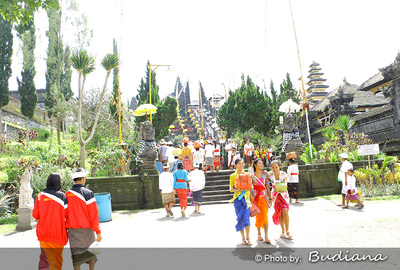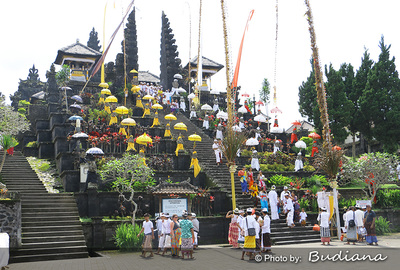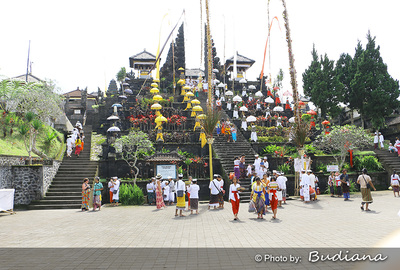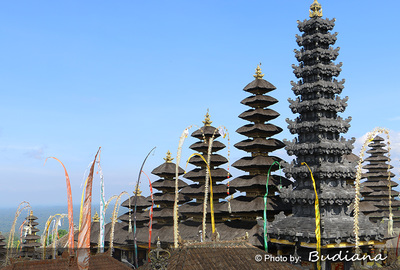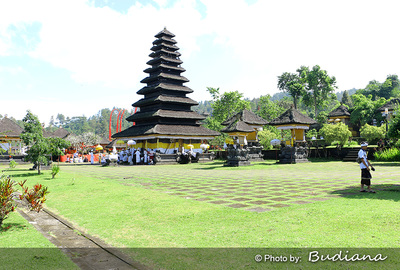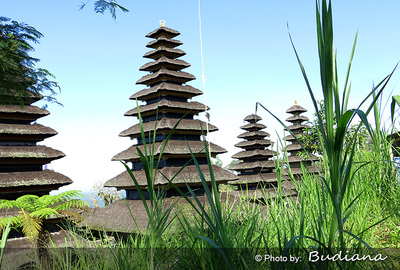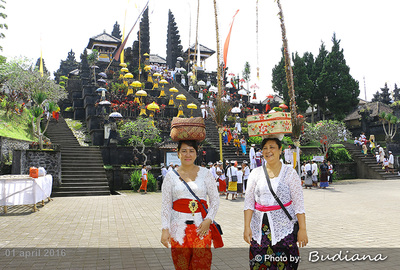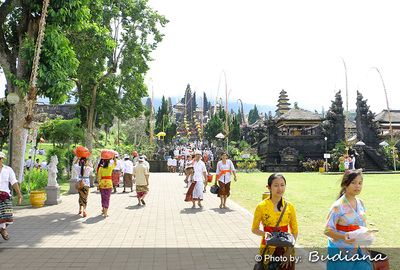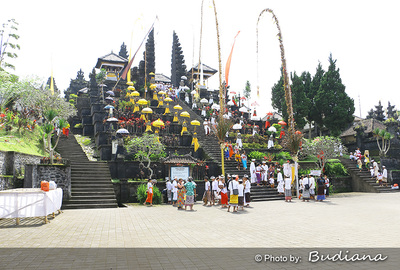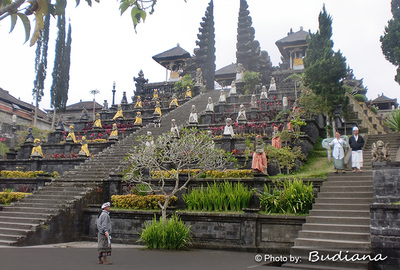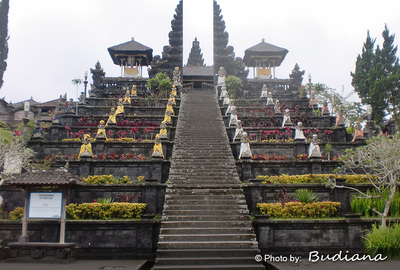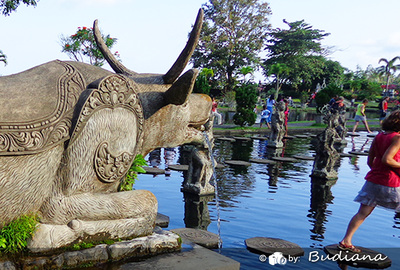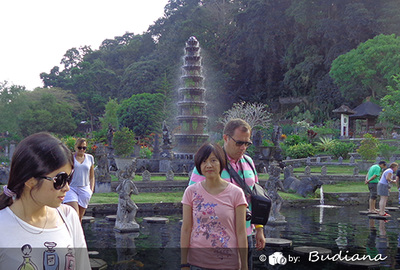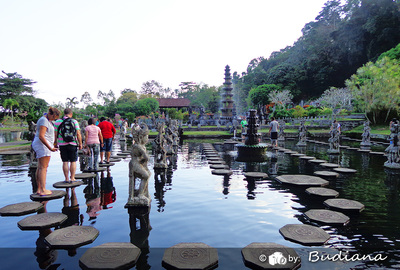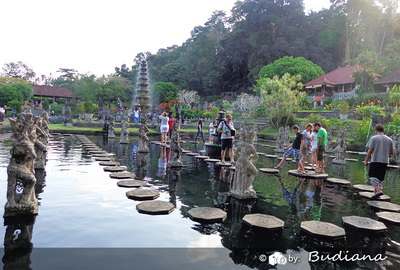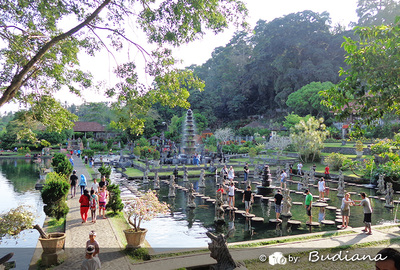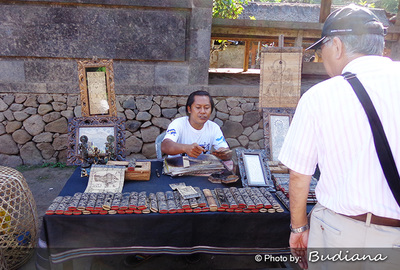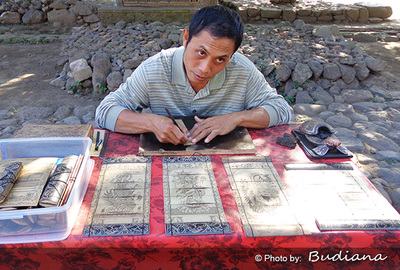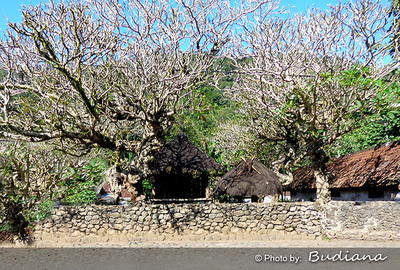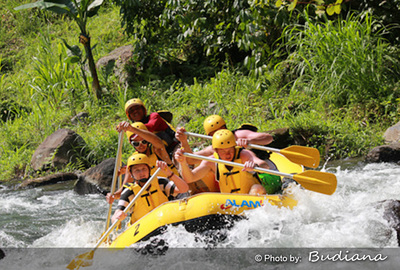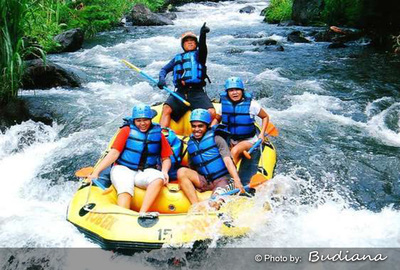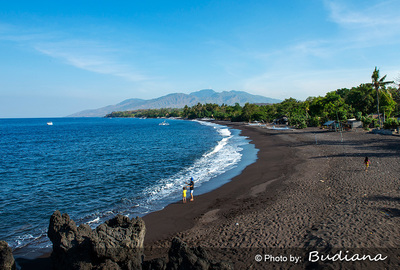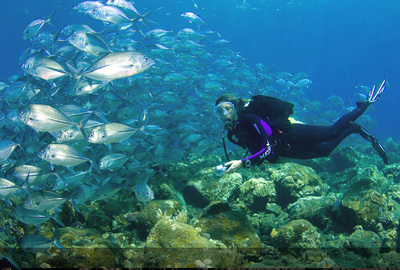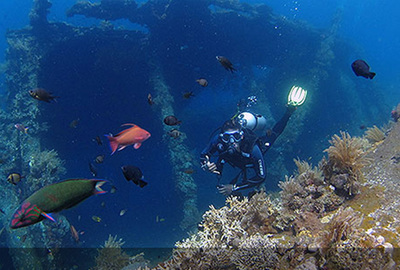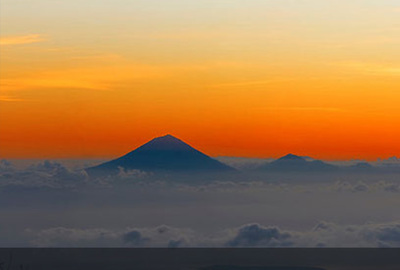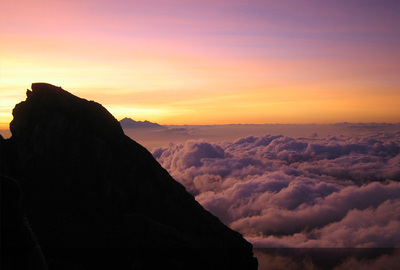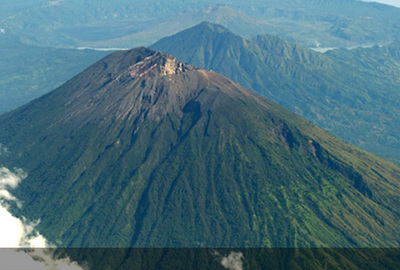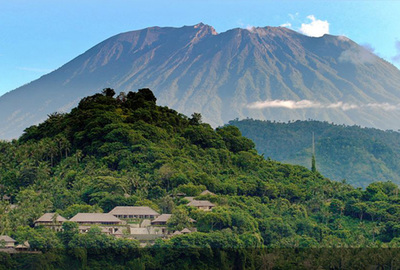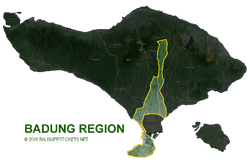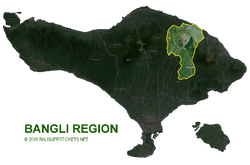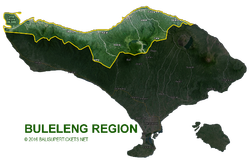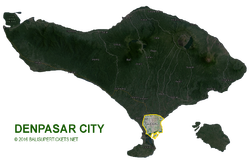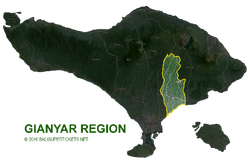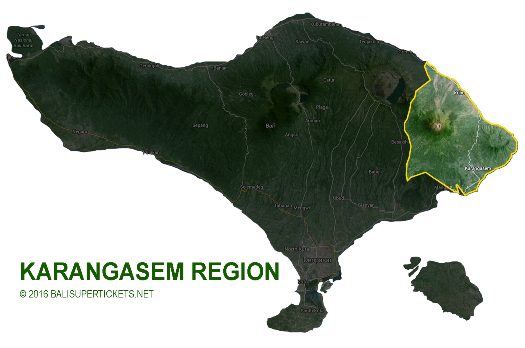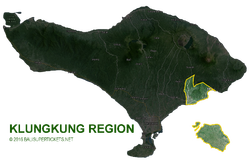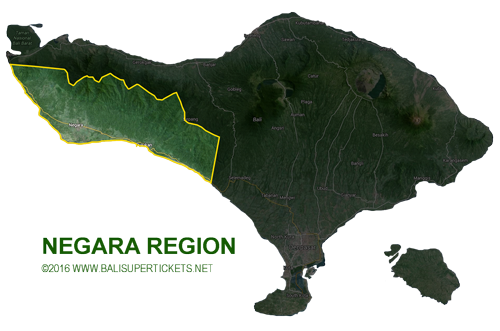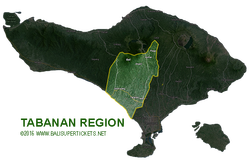Agung, Mount: For Balinese, Mount Agung is the geographical and religious center of the world. Mount Agung, its highest peak. With an elevation of 3,014 meters above sea level, the Bali's highest peak can be climbed between 5 to 8 hours. It is suggested to climb with a guide and consider not wise to climb during religious ceremonies take place in Besakih temple that located six kilometers below on the southwest slope. The last big eruption of the active volcano was in 1963 that cause big disaster. Do you want to get Great Tour Deals to visit this great volcano? Click here
Amed: If you travel from Amlapura, Amed is situated before Tulamben and also a known as a diving spot that has shipwreck located just 10 meters away from the shore. Beside diving, snorkeling or sailing, some nice tracking can be done through the hill. For the local, fishing and sea-salt panning is still the main income resource. The small road along the cost that also goes to Amlapura via Seraya Kangin and Ujung offer a fascinating view of the cost but about 20 kilometers of the road is considerably bad for small wheel vehicle. Tour related for this place is click here
Balina, Beach: A simple, quiet resort with a nice wide black sandy beach and tame waves. Diving excursions in a marine reserve offshore, go for night fishing with local fishermen using lantern or hike the beautiful hillside northwest of the area would be a highlight of your stay here.
Besakih, Temple: Missionary of Danghyang Markandeya, a priest credited with introducing the tradition of daily offerings and the concept of a single god, is claimed to be the founder of the Besakih temple in the 8th century, Bali's biggest and holiest temple. Divided into about 22 separate sanctuaries, it consist over 60 temples and 200 distinct structures. Each caste and kin group, as well as various sects, artisan guilds, and aristocratic families, maintains its own sanctuary. Do you want to get Great Tour Deals to visit this great temple? Click here
Candidasa, Beach: A slow and friendly beach resorts and can be a perfect base to explore all over east Bali as most tourist amenities are available here. Huge horrendous T-shaped concrete breakwaters were built to prevent erosion, which becomes an essential problem since 10 years ago. Do you want to get Great Tour Deals to visit Candidasa? Click here
Iseh: A serene mountain village located three-kilometer south of Selat. The magnificent panoramic view of rice terrace and the Mount Agung attract foreign artist to have seclusion live here including Spies who created some of his most haunting paintings during his live in this navel of the world.
Lempuyang, Temple: A narrow windy road has been built from the main road in Tista (make right turn when you see sign of 'Pura Luhur Lempuyang') to first part of this one of Bali's most important temple. An extensive construction has been doing since few year ago. Although, there still a lot of building still need to be finish but the white hard lime stone that made for three main gate give an impression of a great temple. On clear day one will see not only Gunung Agung but all the way to the islands of Nusa Penida. The other four parts of the temple are located in higher level of the Lempuyang mount. Except for the temple of Telaga Mas, that still can be access by car, other parts is accessible only by walking on about 1800 steps to the highest temple through the forest. On clearer mornings you'll see not only Gunung Agung but all the way to the islands of Nusa Penida and Lembongan.
Puri Kanginan: Surrounded by a thick redbrick wall, this big 'puri' (palace) complex of the last raja Anak Agung Anglurah Ketut, is a blend of European, Chinese, and Balinese architecture and interior design. Some buildings have curios name like Bale Amsterdam and Bale London. The 'puri' is open to guest to visit from 0800 to 1700,overnight guest is sometime accepted.
Sibetan: Known as the center of salak in Bali since 1952. The tourist knows salak as snakeskin fruit that has crisp, and sweet taste, somewhere between apple and strawberry. It has low and thorny palm. The thorny of the palm is used as the fence of salak farm and easily can be seen while driving around the village. Beside selling it as a fruit to all people in Bali, now days sweet or even arak, Balinese alcoholic beverage, can be made out of salak meat.
Sideman: Situated within a beautiful landsjdlisibluee full with rice terrace and 'salak' trees, west of Amlapura or north Klungkung. Sideman known for its 'kain songket', interwoven with designs of gold and silver thread, as well as Balinese healers. Several accommodations nicely nestled in some part of the village, a perfect base for mediation base.
Taman Ujung: It was a beautiful royal retreat for Karangasem royal family, designed in fusion of European and Balinese architecture. The destruction began when Japanese dismantled iron bars in Taman Ujung for weaponry production then followed by Mount Agung eruption in 1963. Further an earthquake in North Bali around 1976 helplessly shattered Taman Ujung into pieces. However, the elements of beauty of the panorama and its surrounding remain. Do you want to get Great Tour Deals to visit this beautiful royal retreat? Click here
Telagawaja River: for the most challenging rapid 3 Rafting in east of Bali. See the related tour package on this river, click here
Tenganan: The most conservative original pre-Hindu Balinese settlement, with distinction of its village layout, architecture, art, and religious rites. An ancient courtyard walls, pavilion temples, magnificent community halls, and old high-based long houses is built in very masculine, crude aristocratic style and is surrounded by 700-year-old walled village. Tenganan is the only place in Indonesia that produces double-ikat textiles known as 'Gringsing'. Lontar, the palm leaf book, and ata basket, the woven vine that last for 100 years, are other common product found within the houses of the people. Once a year around May or June a ritual trance fight (makara-kare) using a sharp prickly between pandanus leaf become an obligatory contest amongst the young men. 'Kawin pandan' : a young man throws a flower over a wall and must marry whoever catches it, is another distinct practice that hold once a year. Do you want to get Great Tour Deals to visit this unique village? Click here
Tirta Gangga: Tirta Gangga, literately mean Water of the Gangges, is another retreat water palace built by last raja of Karangasem, in 1947. It is a well-maintained pool complex that fed by a sacred water spring emerging from the hill in the west-side of the palace. A beautiful rice terrace can be seen form the highland just a bit north of the object. Do you want to get Great Tour Deals to visit Tirta Gangga? Click here
Tulamben, Beach: A small fisherman village that now also becomes one of the best diving spot in Bali. The big diving attraction is sunken American Liberty ship, torpedoed by the Japanese in 1942. Diving or snorkeling is satisfying all year around but the best time is during dry season on July and August. click here for the best price deal of diving packages
Amed: If you travel from Amlapura, Amed is situated before Tulamben and also a known as a diving spot that has shipwreck located just 10 meters away from the shore. Beside diving, snorkeling or sailing, some nice tracking can be done through the hill. For the local, fishing and sea-salt panning is still the main income resource. The small road along the cost that also goes to Amlapura via Seraya Kangin and Ujung offer a fascinating view of the cost but about 20 kilometers of the road is considerably bad for small wheel vehicle. Tour related for this place is click here
Balina, Beach: A simple, quiet resort with a nice wide black sandy beach and tame waves. Diving excursions in a marine reserve offshore, go for night fishing with local fishermen using lantern or hike the beautiful hillside northwest of the area would be a highlight of your stay here.
Besakih, Temple: Missionary of Danghyang Markandeya, a priest credited with introducing the tradition of daily offerings and the concept of a single god, is claimed to be the founder of the Besakih temple in the 8th century, Bali's biggest and holiest temple. Divided into about 22 separate sanctuaries, it consist over 60 temples and 200 distinct structures. Each caste and kin group, as well as various sects, artisan guilds, and aristocratic families, maintains its own sanctuary. Do you want to get Great Tour Deals to visit this great temple? Click here
Candidasa, Beach: A slow and friendly beach resorts and can be a perfect base to explore all over east Bali as most tourist amenities are available here. Huge horrendous T-shaped concrete breakwaters were built to prevent erosion, which becomes an essential problem since 10 years ago. Do you want to get Great Tour Deals to visit Candidasa? Click here
Iseh: A serene mountain village located three-kilometer south of Selat. The magnificent panoramic view of rice terrace and the Mount Agung attract foreign artist to have seclusion live here including Spies who created some of his most haunting paintings during his live in this navel of the world.
Lempuyang, Temple: A narrow windy road has been built from the main road in Tista (make right turn when you see sign of 'Pura Luhur Lempuyang') to first part of this one of Bali's most important temple. An extensive construction has been doing since few year ago. Although, there still a lot of building still need to be finish but the white hard lime stone that made for three main gate give an impression of a great temple. On clear day one will see not only Gunung Agung but all the way to the islands of Nusa Penida. The other four parts of the temple are located in higher level of the Lempuyang mount. Except for the temple of Telaga Mas, that still can be access by car, other parts is accessible only by walking on about 1800 steps to the highest temple through the forest. On clearer mornings you'll see not only Gunung Agung but all the way to the islands of Nusa Penida and Lembongan.
Puri Kanginan: Surrounded by a thick redbrick wall, this big 'puri' (palace) complex of the last raja Anak Agung Anglurah Ketut, is a blend of European, Chinese, and Balinese architecture and interior design. Some buildings have curios name like Bale Amsterdam and Bale London. The 'puri' is open to guest to visit from 0800 to 1700,overnight guest is sometime accepted.
Sibetan: Known as the center of salak in Bali since 1952. The tourist knows salak as snakeskin fruit that has crisp, and sweet taste, somewhere between apple and strawberry. It has low and thorny palm. The thorny of the palm is used as the fence of salak farm and easily can be seen while driving around the village. Beside selling it as a fruit to all people in Bali, now days sweet or even arak, Balinese alcoholic beverage, can be made out of salak meat.
Sideman: Situated within a beautiful landsjdlisibluee full with rice terrace and 'salak' trees, west of Amlapura or north Klungkung. Sideman known for its 'kain songket', interwoven with designs of gold and silver thread, as well as Balinese healers. Several accommodations nicely nestled in some part of the village, a perfect base for mediation base.
Taman Ujung: It was a beautiful royal retreat for Karangasem royal family, designed in fusion of European and Balinese architecture. The destruction began when Japanese dismantled iron bars in Taman Ujung for weaponry production then followed by Mount Agung eruption in 1963. Further an earthquake in North Bali around 1976 helplessly shattered Taman Ujung into pieces. However, the elements of beauty of the panorama and its surrounding remain. Do you want to get Great Tour Deals to visit this beautiful royal retreat? Click here
Telagawaja River: for the most challenging rapid 3 Rafting in east of Bali. See the related tour package on this river, click here
Tenganan: The most conservative original pre-Hindu Balinese settlement, with distinction of its village layout, architecture, art, and religious rites. An ancient courtyard walls, pavilion temples, magnificent community halls, and old high-based long houses is built in very masculine, crude aristocratic style and is surrounded by 700-year-old walled village. Tenganan is the only place in Indonesia that produces double-ikat textiles known as 'Gringsing'. Lontar, the palm leaf book, and ata basket, the woven vine that last for 100 years, are other common product found within the houses of the people. Once a year around May or June a ritual trance fight (makara-kare) using a sharp prickly between pandanus leaf become an obligatory contest amongst the young men. 'Kawin pandan' : a young man throws a flower over a wall and must marry whoever catches it, is another distinct practice that hold once a year. Do you want to get Great Tour Deals to visit this unique village? Click here
Tirta Gangga: Tirta Gangga, literately mean Water of the Gangges, is another retreat water palace built by last raja of Karangasem, in 1947. It is a well-maintained pool complex that fed by a sacred water spring emerging from the hill in the west-side of the palace. A beautiful rice terrace can be seen form the highland just a bit north of the object. Do you want to get Great Tour Deals to visit Tirta Gangga? Click here
Tulamben, Beach: A small fisherman village that now also becomes one of the best diving spot in Bali. The big diving attraction is sunken American Liberty ship, torpedoed by the Japanese in 1942. Diving or snorkeling is satisfying all year around but the best time is during dry season on July and August. click here for the best price deal of diving packages

